The first Belgian training workshop on district heating contained no less than four different district heating sessions and an additional session on sustainable mobility services. The sessions were guided by the STEP UP coaching trajectories with some of the Flemish companion cities provided by VITO, complemented by EANDIS and a practical testimony from the city of Antwerp, one of the companion cities.
The workshop was attended by almost 30 representatives from the Flemish Smart Energy Cities Network, experts and grid distribution companies. The variety of presentations considering the different perspectives from which district heating can be appraised, open discussions and the co-operational atmosphere amongst attendents made this first workshop a great success.
Below you can find the summaries of the different sessions, downloadable presentations and reports.
1. Market models for District Heating – Virginia Gomez Oñate (VITO)
Virginia Gomez Oñate gave a summary introduction to DH by explaining the fundamental idea behind the concept, the components of such a system, its requirements, advantages and disadvantages and concluded the introduction with a small-scale example from Belgium.
The second part of the session focused on the different policy frameworks and business models for DH that exist. This was illustrated by the frameworks and models which exist in Denmark and Sweden, two countries with a high district heating network coverage, thanks to the Climate Agenda.
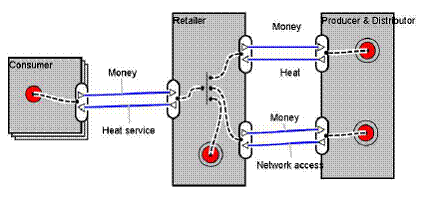
In the Belgian context – to observe that a framework is virtually not existing, except for support schemes for Combined Heat and Power (CHP). As a conclusion, advice for developing DH in city territories was provided.
The last part expanded on the assessment of business cases for DH. Assessing whether a DH system is economically feasible consists of many steps to determine costs and revenues, and comparative assessments of different organizational models. Apart from the many calculation specifics of costs and revenues five organisational options with their pros and cons were explained. The choice for either model is motivated by the local situation, but it is clear that more needs to be done on the regulatory framework as long term investments cannot take place in an uncertain legal environment. Specific advice was given for the Belgian incipient market and local projects.
 Market models for District Heating – Virginia Gomez Oñate (VITO) - Click to Download
Market models for District Heating – Virginia Gomez Oñate (VITO) - Click to Download The reports upon which the workshop session is based -with more into-depth information for those who want to dig deeper- are available through the following links:
The Heat Market models benchmarking study is available here .
The Market Models for District Heating study is available here .
2. Flexible or dynamic district development – Mathias Coomans (VITO)
Mathias Coomans presented the outcome of a technical feasibility exercise for DH to an apartment building for a new development site in the city of Ostend. A feasibility study for a DH grid conducted by the provincial development company concluded that a DH grid for new developments in the city could be a very valid option.
Project developers in many cities still don’t consider the option for the district or buildings and revert to business as usual - opting for individual boilers for space heating and domestic hot water in apartment buildings. This common practice misses out on many opportunities not in the least because this practice constitutes a lock-in for better current and future options from an economic and financial point of view. It is difficult for local authorities to defend or enforce more interesting options and this approach aims to inform authorities to give them a stronger position in negotiations when developments do not comply with SEAP objectives.
The life cycle cost of 5 different options for supplying the apartment building with space heating and domestic hot water was modeled with a flexible tool with numerous customisation options. The presentation outlined all technical and economic assumptions made and provided a sensitivity analysis.
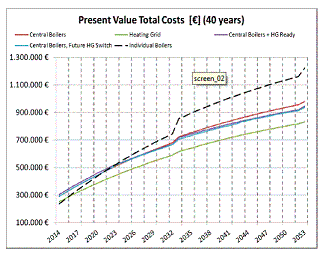
The conclusion of the modeling exercise is that business as usual clearly constitutes a lock-in as even temporary solutions with communal boilers with later connection to a DH system are financially far more beneficial. The best option is to connect directly to a DH, but even in the case that this still needs to be developed, interim solutions are valid options even when the price of DH and natural gas are equal (a conservative assumption in many cases). On top of that the choice for communal systems provides for many other benefits related to the energy performance of buildings etc. It remains to be seen whether the commonly used reasons for choosing for individual solutions are as valid as they are perceived to be. Or is business as usual the lazy option or burden shifting?
VITO has the tool at its disposal and can perform these exercises for many more developments. Informative guides for the different stakeholders in a district development process will be made to help cities to advocate these solutions.
 Flexible or dynamic district development – Mathias Coomans (VITO) - Click to download
Flexible or dynamic district development – Mathias Coomans (VITO) - Click to download
 StepUp Fiche Warmtenet samengevoegd_finaal.pdf
StepUp Fiche Warmtenet samengevoegd_finaal.pdf
3. The Eandis approach in District Heating - Paul Gistelinck (Dir. Heat, Eandis)
Paul Gistelinck premiered Eandis’ promotional video on DH and continued with a presentation. In the current framework which is under development in Flanders, Eandis plays its role as grid manager and market facilitator by performing many different tasks which are necessary in order to make DH possible. An overview of the technical details of DH was provided, the different networks it is composed of, the heat sources and the types of pipes used. When advantages and disadvantages were listed it was emphasised that Eandis as a natural partner of municipalities can mitigate disadvantages.
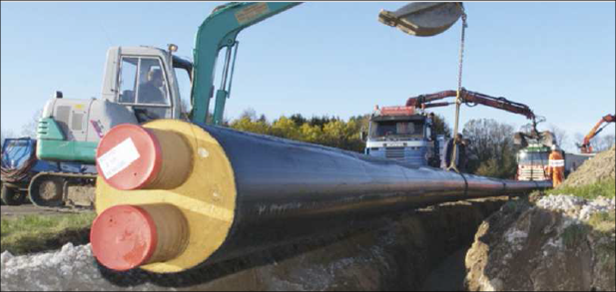
Long payback periods (up to 25 years is feasible), uncertainty on the legal framework and regulations, the necessary number of connected costumers and discontinuity of the heating source become less of a problem. There are, however limits to Eandis’ interest in DH and financial credibility and type of heating source are decisive factors. Establishing DH cannot be a mantra and feasibility is considered on a case-by-case basis. Eandis is developing together with VITO and the Flemish Energy Agency (VEA), a heat demand map which will be available by the end of this year. A quick feasibility estimate can be carried out when quantitative information on demand and supply in time is available. On the basis of such an estimate a more detailed feasibility study can be undertaken. If this study reveals a positive business case and partners can be found, Eandis together with partners can realise the DH system.
 The Eandis approach in District Heating - Paul Gistelinck (Dir. Heat, Eandis) - Click to download(Available in Dutch only)
The Eandis approach in District Heating - Paul Gistelinck (Dir. Heat, Eandis) - Click to download(Available in Dutch only)
4. District Heating as a component of Strategic Energy Policy in Antwerp – Sam Verbelen (EMA – city of Antwerp)
Sam Verbelen, engineering consultant in DH for the City of Antwerp was invited to explain more about the decision making process leading up to opting for DH in Antwerp’s energy strategy. Antwerp recently called for tenders for what will become the biggest DH system in Belgium for the urban development site ‘Nieuw Zuid’. The case and the approach taken by the city may inspire other cities.
The Covenant of Mayors was signed by the city of Antwerp in 2009, this was the starting point for Antwerp’s urban energy policy. It is also the basis for its Climate Plan to become climate neutral in 2050 and its general policy for a sustainable city. DH is an essential component of this strategy to make the transition towards a climate neutral society. The choice for DH is motivated by a long list of reasons as there are energy independence, exhaustibility of fossil fuels, affordable energy prices (fuel poverty), ecological concerns, recuperation of waste heat and health. When looking into the many potential energy sources, waste heat from electricity production and industrial waste heat from the port area provide for large-scale solutions with minimal environmental impact.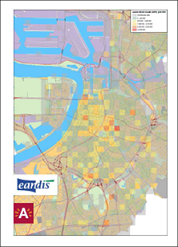
Antwerp’s strategic energy policy is underpinned by three pillars: strategic energy potential mapping, sustainable energy district design, and regulatory and business energy affairs. The first pillar entails strategic mapping of territorial energy demand and supply options. By overlaying the many different energy demand layers with potential energy sources and storage options (waste heat, solar, wind, soil, waste water, surface water etc.) possible matches are mapped and this information is combined with urban development and renewal projects. Potential areas receive a pre-feasibility check. These areas can then be used for simulations of measures to implement to optimize the system. In parallel public support for such measures has to be established. For the energy demand map real energy (natural gas and electricity) consumption data are supplied by Eandis and a model uses this information to attribute these two energy consumptions to four use categories (space heating, domestic hot water, cooling, electricity). The demand and potential scan maps are now available here.
The second pillar encompasses advice services and technical-economic feasibility studies of DH in order to result in sustainable (energy) areas design. Sustainable area design is a dialogue of city planners and project developers for which many different instruments are used to turn ambitions into physical projects. An example of such cooperation is the MIP3-Heat project which resulted in 2 technical-financial feasibility studies for DH based upon the VITO HEAT model. The project transcended regular feasibility studies in the way that it went from idea to concept and from concept to action.
The third pillar is all about developing the minimal set of legal and business aspects which need to be fulfilled to allow for a stable operational business model for DH. It also implies the compliance with higher level policy.
With these three pillars the city of Antwerp can turn its sustainable energy ambitions into concrete realizations; many other projects are in the pipeline.
 District Heating as a component of Strategic Energy Policy in Antwerp – Sam Verbelen - Click to download (Available in Dutch only)
District Heating as a component of Strategic Energy Policy in Antwerp – Sam Verbelen - Click to download (Available in Dutch only)
5. Sustainable Mobility, an overview of Eandis’ supporting services to communities (Tonny De Coster, account manager Eandis)
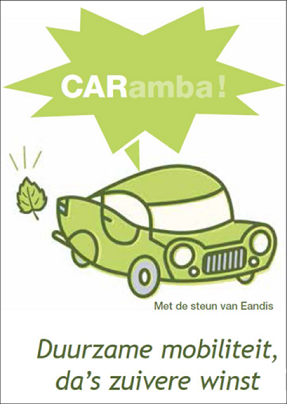 As sustainable city planning isn’t just about energy-efficiency, renewable energy generation or DH but much more, another component which should not be neglected is sustainable transport.
As sustainable city planning isn’t just about energy-efficiency, renewable energy generation or DH but much more, another component which should not be neglected is sustainable transport.
Tonny De Coster, account manager for cities and communities in their effort to improve the sustainability of transport on their territory, presented the whole range of possibilities Eandis offers through their CARamba programme. Eandis, the Flemish grid distribution company which covers approximately 80% of all Flemish communities has extended its Energy Services Programme for communities with a broad sustainable transport programme.
Starting from the current transport situation in Flanders, the presentation explored the many reasons for choosing for sustainable transport solutions for cities. The technical feasibility, financial benefits, the many environmental advantages, the fact that it is an important part of the efforts committed to through the Covenant of Mayors, and last but not least the exemplary role of local authorities must play in creating choices for sustainable transport for residents. Sustainable transport is all about logical reasoning. The first question is whether the movement is really necessary? Secondly, if so, how can this be done in a sustainable way? Thirdly, which technology suits your profile best? Sustainable transport is a complementary story of many different valid solutions which depend up to a great extent upon the distance that needs to be traveled. Examples were given on the autonomy of different fuel options for cars.
Eandis’ task towards communities is to diminish the workload of communities, decrease the purchase price of vehicles and infrastructure through group purchases, support and advice to help them to reach their environmental objectives, and awareness raising. To do this a range of products has been developed:
• A free mobility scan of the whole municipal fleet to assess its environmental performance;
• A Vehicle master plan: a strategic long term purchase plan to increase the sustainability of the fleet;
• Group purchases of electric bicycles;
• Group purchases of sustainable vehicles;
• The installation of electric recharging stations and CNG stations;
• Interesting financing options; and
• Communication and awareness raising for both local authority employees as citizens.
• Follow-up and monitoring frameworks established.
With this sustainable mobility programme, EANDIS seeks to support communities covered by its natural gas and electricity grid in their efforts to fulfill the ambitions set out in their plans to become more sustainable.
 Sustainable Mobility, an overview of Eandis’ supporting services to communities (Tonny De Coster, account manager Eandis) - Click to download
Sustainable Mobility, an overview of Eandis’ supporting services to communities (Tonny De Coster, account manager Eandis) - Click to download
(Available in Dutch only)